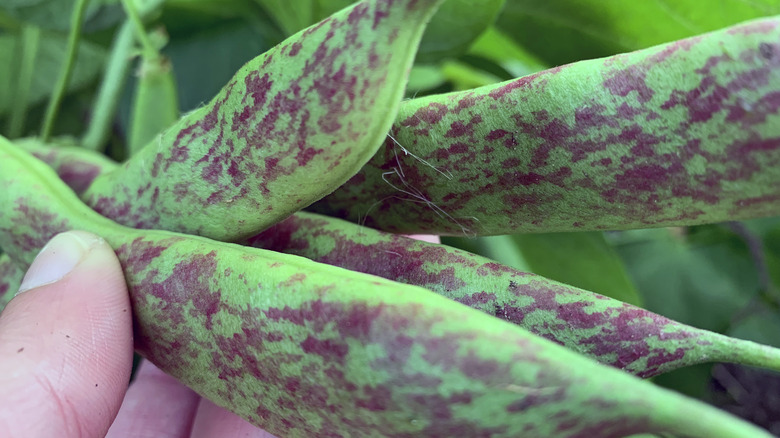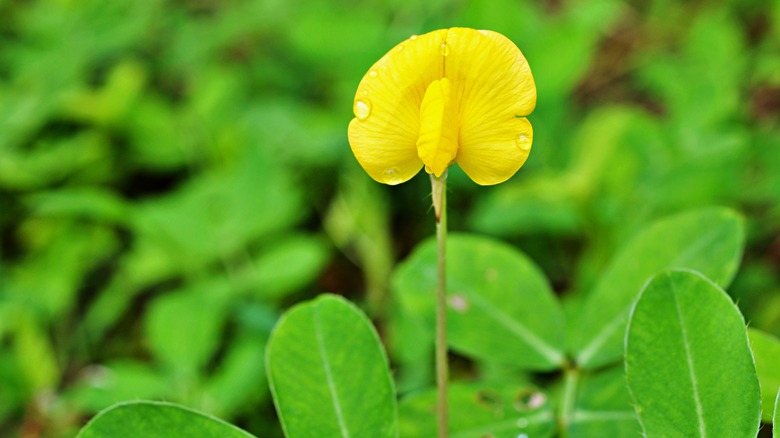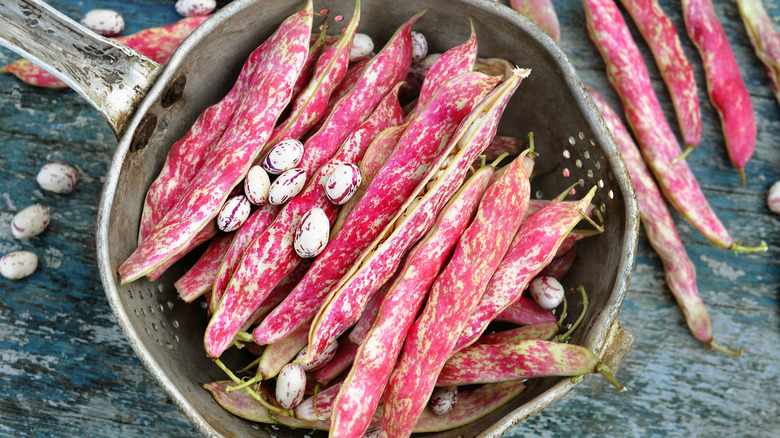Why You Should Grow Pinto Beans In The Summer
Pinto and other shelling beans are some of the most delicious and versatile crops you can grow. Not only can you dry and store them for winter, but they, like other types of horticultural beans, can also be harvested young and eaten fresh. Growing pinto beans during the summer months ensures you'll be able to savor food from your garden all year.
While gardeners and chefs regularly refer to pinto beans as if they were a specific cultivar, this isn't actually the case. Instead, pinto, which means painted in Spanish, refers to the distinctive mottled colors the beans have and doesn't refer to a specific variety. These beans have been grown for millions of years in Mexico and Peru, and while they are self-fertile and don't require pollination, their charming flowers can still help bring life and color to your garden before the beans develop. Considering how delicious the beans are, it's no surprise they're the most popular type of dried beans in the U.S.
Growing pinto beans
Pinto beans (Phaseolus vulgaris) are available in both bush and pole varieties, and both types of bean plants are easy to grow. While pole beans are often more productive because they are larger plants, they also require trellises or other types of support to grow well and mature later than bush beans, which can be a problem for gardeners with short growing seasons because pinto beans regularly take 90 days or longer to develop into mature dried beans. Trellises do allow you to maximize your outdoor space, though, because your plants can grow vertically instead of horizontally. Regardless of the specific type of pinto beans you grow, don't plant them out until after your last frost because they are not frost tolerant. It may be tempting to get a head start by sowing your beans inside at first and then transplanting them once the weather warms, but unfortunately, beans don't transplant well and generally require direct sowing to thrive. Beans can be grown as summer annuals in zones 2 through 11.
When your soil temperature has reached at least 65 degrees Fahrenheit and all danger of frost has passed, you're ready to sow your pinto beans. Beans grow best in rich, well-draining soil and require full sun. They also require about an inch of water a week, so be sure to water your beans regularly during dry periods.
Rotating and harvesting pinto beans
Pinto beans, like other beans, benefit from crop rotation and ideally should not be grown in the same location for several years in a row. This both decreases the risk of pathogens that can damage the beans and can also benefit the other crops you rotate them with because beans are nitrogen fixers that can improve the soil in areas where they're planted. Many people opt to grow their beans with zucchini in the garden, allowing the beans to nourish the soil, while the large leaves of the zucchini plants help shade out weeds that might otherwise take over.
Because pinto beans can be picked at multiple different stages, you have a lot of options for harvesting them. They can of course be picked early and eaten pod and all just like snap beans, but you can also leave them to mature a bit longer and shell them, eating only the beans inside. The third option is to let the beans dry completely on the plant and then store the dried beans to soak and use at a later date. This option works best in areas with long, warm summers and dry autumns.


